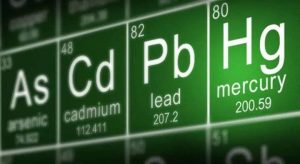Heavy Metal Removal
Heavy Metal Absorption By Natural Zeolite Clinoptilolite,it can reduce the transfer of heavy metals, such as copper, lead, and zinc from soils to plants
Natural Zeolite - Heavy Metal Removal
THE EFFECT OF NATURAL ZEOLITE ON HEAVY METAL ABSORPTION

Contamination of heavy metals in soil and water supplies has steadily increased as a result of overpopulation and the expansion of industrial activities. The presence of heavy metals in water supplies is of significant concern due to their toxicity to humans, animals, and plants. Pollutants include cyanide, solver, cobalt, manganese, aluminum, magnesium, arsenic, copper, iron, lead, and mercury. The application of natural zeolites as molecular sieve for heavy metal removal is a promising technique in the environmental cleaning process . The utilization of natural zeolites has focused on the removal of ammonium and heavy metals through ion exchange.
The ion-exchange properties of zeolites allow them to trap undesirable metals and prevent them from entering ecosystems and the food chain (Mumpton, 1985). Studies report that pulverized zeolites, particularly clinoptilolite, reduce the transfer of heavy metals, such as copper, lead, and zinc from soils to plants (Mumpton, 1985).
Turkman et al. (2004) examined the effect of pretreated and untreated clinoptilolite zeolite in the removal of lead, cadmium, nickel, and zinc from wastewaters. The mineral demonstrated a 96 percent removal efficiency for lead, zinc, and cadmium. The maximum sorption capacities for untreated zeolite were measured as 0.18 and 0.12meq/g, whereas pretreated minerals demonstrated a range of 0.72 and 0.41 meq Cd/g.
Moreno et al. (2001) conducted a series of decontamination tests to study the impact of zeolite on the purification of acid mine waters. The results suggest that zeolitic materials can be successfully used for heavy metal uptake in the water purification process. Doses of 5-30 g of zeolite/L were applied according to heavy metal levels. Researchers also found that zeolite increases general pH, which causes metal-bearing solid phases to precipitate and enhances the efficiency of the decontamination process (Moreno et al., 2001).
A study by Mamba et al. (2009) examined metal removal from contaminated water by applying a mix of HCl-activated clinoptilolite and bacteria. The results indicated that clinoptilolite removed 98 percent of copper, iron, and cobalt. The researchers concluded that clinoptilolite successfully removes metal recovery from mining and mineral processing solutions. It is effective as water decontaminate.
Benefits of UZ-Min Clinoptilolite Zeolite on Heavy Metal Removal
- Highly effective at removing contaminants from industrial and/or mine drainage
- Binds and absorbs heavy metal cations in contaminated soil and aqueous environments
- Strong adsorption and absorption capabilities prevent toxins from leaching into the environment
- Creates strong bonds with cations including lead (Pb), zinc (Zn), copper (Cu), mercury (Hg) chromium (Cr), iron (Fe), manganese (MN), aluminum (Al), silver (Ag) and cobalt (Co)
